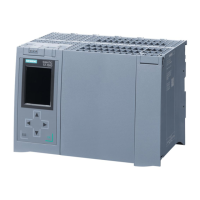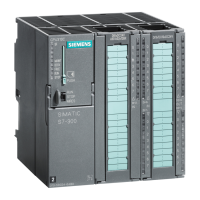Basics of program execution
10.3 Events and OBs
S7-1500R/H redundant system
System Manual, 01/2024, A5E41814787-AF
327
Example: OB 72 CPU redundancy failure
Automation task
You use the S7-1500R redundant system to control a blast furnace. The S7-1500R redundant
system controls the blast furnace temperature, volume and pressure parameters.
Feature
In the event of a loss of redundancy, for example because the primary CPU fails, a signal lamp
in the blast furnace control room signals this event. The control room notifies the service
personnel. The service personnel replace the defective CPU.
Solution
OB 72 is called in the event of a CPU redundancy error. The user program in OB 72 controls a
digital output module (relay) in an ET 200SP with a connected signal lamp.
Response of S7-1500R/H redundant system when cycle time is exceeded
The tables below show how the redundant system responds when the cycle time is exceeded.
If the user program does not reach the cycle control point within the maximum cycle time,
the redundant system responds as described in the column "1st time cycle time is exceeded".
The redundant system then resets the cycle time monitoring.
If the maximum cycle time is exceeded for a second time in the same cycle, the redundant
system responds as described in the column "2nd time cycle time is exceeded". The
redundant system then resets the cycle time monitoring.
If the maximum cycle time is exceeded for a third time in the same cycle, the redundant
system responds as described in the column "3rd time cycle time is exceeded". The redundant
system then resets the cycle time monitoring (only when time error OB 80 is configured).
Table 10- 4 Response of S7-1500R/H redundant system when cycle time is exceeded, without OB 80
1st time cycle time is exceeded
2nd time cycle time is exceeded
System Primary
Backup
System Primary
Backup
System Primary
Backup
1)
2)
1)
SYNCUP until snapshot of the work memory contents
2)
SYNCUP after snapshot of the work memory contents

